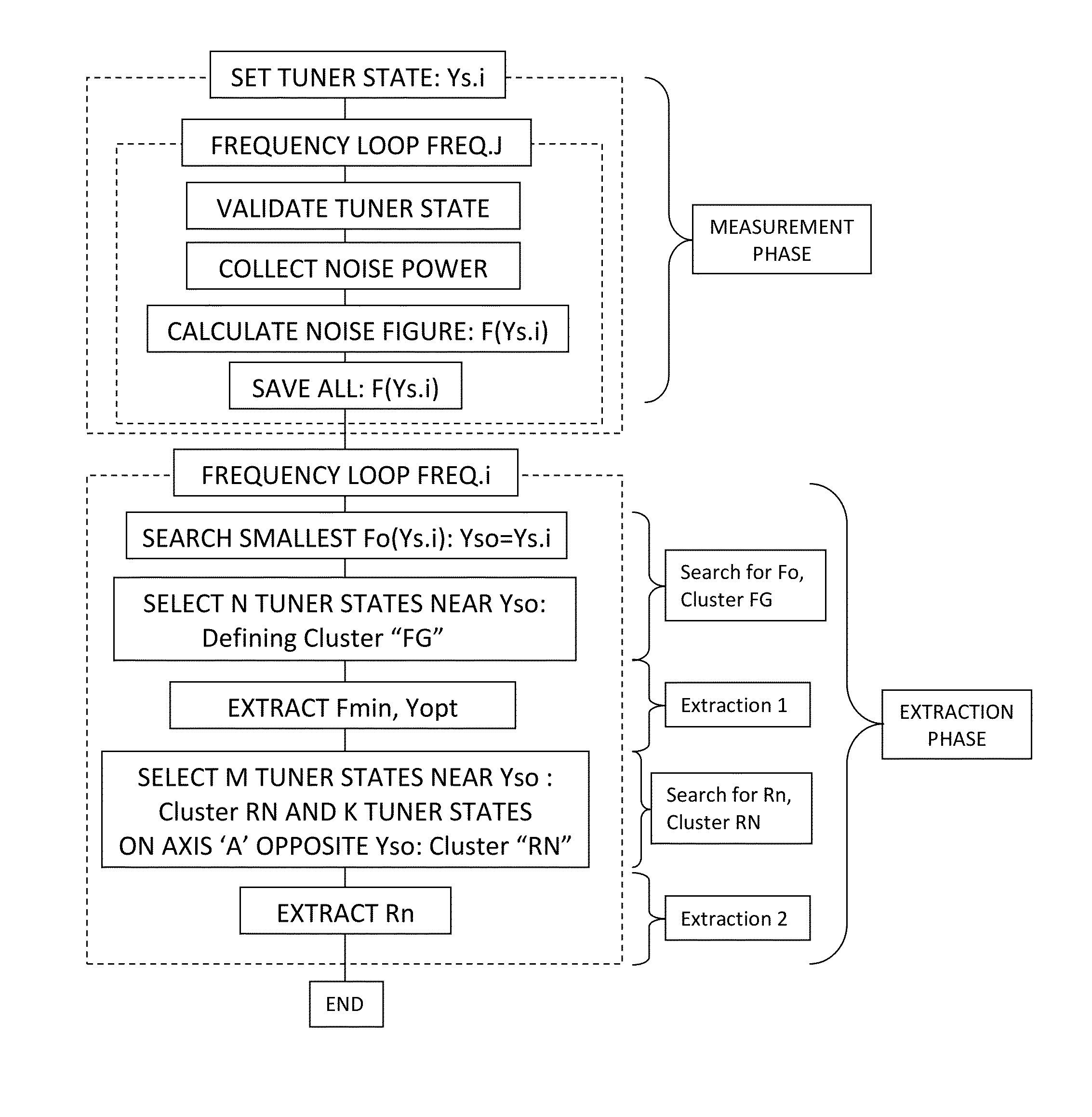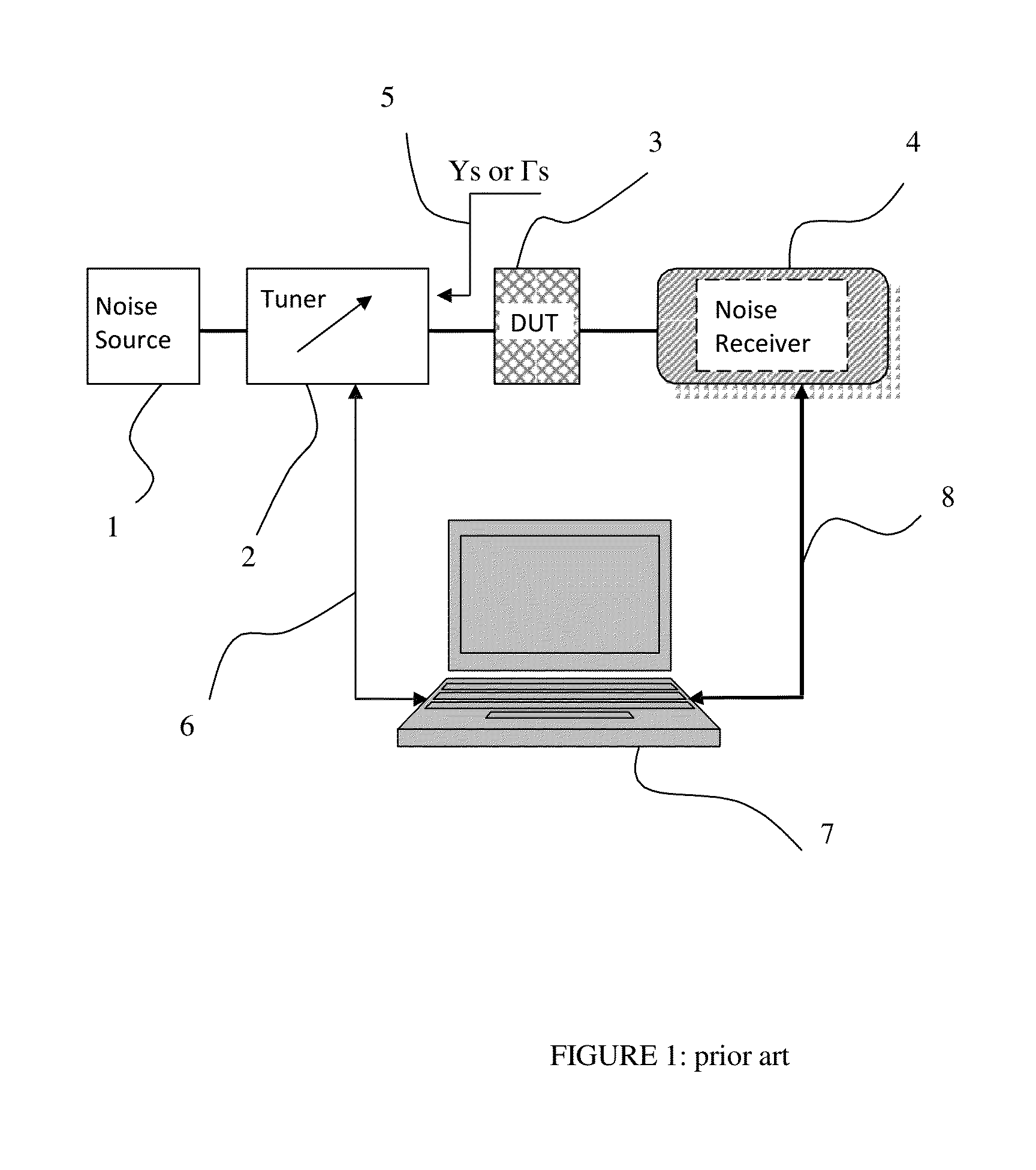Noise parameter extraction method
a noise parameter and extraction method technology, applied in the direction of noise figure or signal-to-noise ratio measurement, instruments, resistance/reactance/impedence, etc., can solve the problems of extremely sensitive noise measurement, difficult to handle orders of magnitude, and low level of quantities to be measured
- Summary
- Abstract
- Description
- Claims
- Application Information
AI Technical Summary
Benefits of technology
Problems solved by technology
Method used
Image
Examples
Embodiment Construction
[0031]FIG. 5 shows the typical dependence of Noise Figure “F” from the source admittance (reflection factor). Equation (1) describes a set of isometric circles on the Smith chart. The center of the smallest circle is the optimum admittance Yopt (or the equivalent Topt) following the relation: Γopt=(Yo−Yopt) / (Yopt+Yo), whereby Yo is the normalization admittance corresponding to the normalization impedance Zo=50Ω(Yo=20 mS). The radius of the isometric noise figure circles increases and their center shifts towards the periphery of the Smith chart as the parameter F increases. A dependence of noise figure across the circles (section Axis A) is shown in FIG. 6. It shows a hyperbolic increase towards the closer edge of the Smith chart (F˜1 / Gs) whereby Gs=Re(Ys) and, approximately, a linear increase towards the far edge of the Smith chart: F˜Rn*Gs.
[0032]In an analytic formulation the relation between noise figure and source admittance is shown in the following equations:
F=Fmin+Rn / Gs*((Gs−G...
PUM
 Login to View More
Login to View More Abstract
Description
Claims
Application Information
 Login to View More
Login to View More - R&D
- Intellectual Property
- Life Sciences
- Materials
- Tech Scout
- Unparalleled Data Quality
- Higher Quality Content
- 60% Fewer Hallucinations
Browse by: Latest US Patents, China's latest patents, Technical Efficacy Thesaurus, Application Domain, Technology Topic, Popular Technical Reports.
© 2025 PatSnap. All rights reserved.Legal|Privacy policy|Modern Slavery Act Transparency Statement|Sitemap|About US| Contact US: help@patsnap.com



